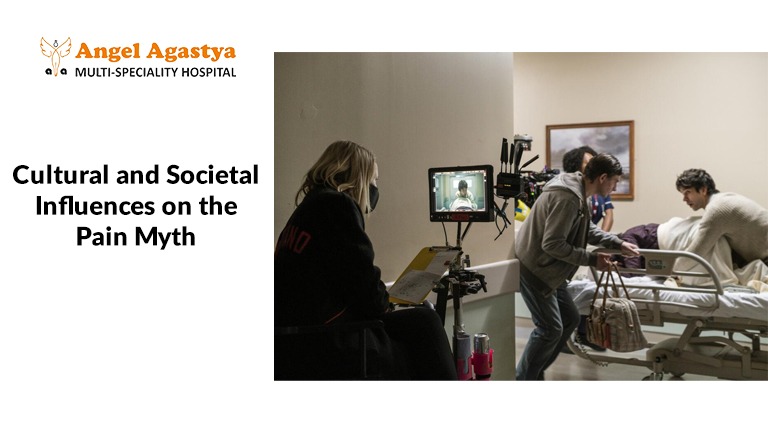Ultimate Guide to Painless Normal Delivery: Debunking the ‘Painful Birth’ Myth
Discover the truth about normal delivery and why it doesn’t have to be a painful experience. Learn expert-backed tips, techniques, and myths busted to empower you for a smooth and confident childbirth journey!
Introduction
Giving birth is often described as a painful birth and challenging experience, but understanding and preparing for a painless normal delivery can help overcome these concerns. This widespread belief, often referred to as the “painful birth” myth, can have a negative impact on a woman’s mental and emotional preparation for labor. However, childbirth doesn’t have to be traumatic or unbearable. By embracing the concept of Painless Normal Delivery, women can approach this life-changing event with confidence and a sense of empowerment.
When fear and anxiety dominate, the body naturally produces stress hormones like adrenaline, which interfere with the labor process. These hormones can cause muscles to tense up, making contractions more uncomfortable and potentially prolonging labor. On the other hand, the body is designed for childbirth and releases helpful hormones such as oxytocin and endorphins, which promote a smoother and more manageable birthing experience.
Preparing for a Painless Normal Delivery involves understanding and supporting these natural processes. Techniques like deep breathing, mindfulness, and staying informed about labor can help reduce fear and encourage a more positive outlook. Reframing the narrative around childbirth—from one of pain to one of strength and capability—can empower women to trust their bodies and experience the joy of giving birth in a way that feels safe and fulfilling.
Deconstructing the “Painful Birth” Myth

The belief that childbirth is always unbearably painful has been deeply ingrained in our culture and society for generations. This idea stems from a mix of media portrayals, historical perspectives, and personal stories, all of which often overshadow the reality that a Painless Normal Delivery is possible with proper care, preparation, and support. Understanding these influences can empower women to approach childbirth with confidence and positivity, breaking free from unnecessary fear.
Cultural and Societal Influences on the Painful Birth Myth
Several factors contribute to the widespread misconception that childbirth must involve extreme pain:

- Media Representation
Movies and television often depict labor as a chaotic, loud, and intensely painful experience. These dramatized portrayals prioritize shock value over reality, leaving viewers with the impression that pain is unavoidable in childbirth. Such narratives overshadow the fact that childbirth can be managed effectively through modern techniques like proper breathing, guided relaxation, and medical interventions aimed at minimizing discomfort. - Historical Beliefs
Historically, childbirth was viewed through the lens of punishment and suffering. In certain religious or cultural contexts, it was even seen as a consequence for women. These outdated beliefs have contributed to the normalization of fear around childbirth. However, advancements in medical science and changing perspectives on women’s health have shown that pain doesn’t have to define the birthing experience. Techniques like prenatal education, mindfulness, and even epidurals have paved the way for smoother, less painful deliveries. - Personal Stories
Hearing traumatic birth stories from family or friends can deeply influence a woman’s perception of childbirth. Such stories are often shared without context or balance, focusing only on the painful moments and ignoring positive experiences or solutions. This can create fear and anxiety, making women believe that a painful labor is inevitable.
The truth is that with proper prenatal preparation, supportive care, and access to options like breathing exercises, relaxation techniques, and skilled medical assistance, a Painless Normal Delivery is achievable. Techniques like Lamaze classes, hypnobirthing, and even pain management tools can transform the experience of labor into something empowering rather than terrifying.
The Role of Fear and Anxiety in Labor

Fear and anxiety can greatly influence how women experience labor, often making it more challenging and uncomfortable. These emotions are common but can interfere with achieving a painless normal delivery. When a woman is stressed or anxious, her body undergoes several changes that can complicate the labor process.
One of the key effects of stress is hormonal imbalance. High levels of stress cause the body to release cortisol, also known as the stress hormone. Elevated cortisol levels can interfere with the production of oxytocin, which is essential for smooth and effective uterine contractions. Oxytocin not only helps regulate contractions but also promotes feelings of relaxation and bonding during labor. Without sufficient oxytocin, contractions can become irregular, labor may slow down, and the pain can feel more intense.
Anxiety also causes physical tension, particularly in the muscles of the pelvic region. This tension can make it harder for the baby to move through the birth canal smoothly. The result is often prolonged labor, increased discomfort, and a higher chance of requiring medical interventions. When the body is tense, it becomes more difficult to achieve a calm and controlled birthing process, which is essential for a painless normal delivery.
Addressing these issues begins with preparation. Relaxation techniques such as deep breathing, meditation, and prenatal yoga can help reduce anxiety and promote a sense of calm. Attending childbirth education classes is another effective way to understand what to expect during labor and gain confidence in your body’s ability to handle the process. Emotional support from loved ones, doulas, or medical professionals can also make a significant difference in easing fears.
By managing fear and anxiety, women can create the optimal conditions for a painless normal delivery. Focusing on mental and physical relaxation not only improves the birthing experience but also contributes to a safer and healthier delivery for both mother and baby.
The Impact of Medical Interventions on Perceptions of Birth
Medical interventions can be life-saving, but their overuse has contributed to the “painful birth” myth. They often overshadow the potential for a Painless Normal Delivery:
- Epidurals and Interventions
- While effective for pain relief, epidurals may lead women to doubt their ability to manage labor naturally.
- Risk Emphasis in Healthcare
- A focus on potential complications can heighten anxiety, detracting from the understanding that childbirth is a natural process.
Unnecessary interventions may disconnect women from their bodies, diminishing their sense of empowerment during childbirth.
Breaking the Cycle of Fear

Education and preparation are key to overcoming the “painful birth” myth and achieving a Painless Normal Delivery. Techniques such as mindfulness, breathing exercises, and movement can help women approach labor with confidence and positivity.
Reframing the Labor Experience
Labor is a natural process that the human body is well-designed for. Understanding this can help women experience a Painless Normal Delivery:
- Hormonal Support:
- Oxytocin drives contractions and promotes relaxation.
- Endorphins serve as natural painkillers, reducing discomfort and boosting positivity.
- Body’s Design:
- The pelvis, muscles, and ligaments work together to facilitate childbirth, proving the body’s remarkable capability for labor.
The Role of Movement and Positioning

Movement and positioning can significantly enhance comfort and efficiency during labor, supporting a Painless Normal Delivery:
- Upright Positions:
- Standing, squatting, or leaning forward uses gravity to aid the baby’s descent.
- Tools for Comfort:
- Birthing balls, warm baths, or rocking chairs can relieve tension and ease pain.
Continuous Support: A Key to Success
Support during labor plays a crucial role in achieving a Painless Normal Delivery:
- Emotional Support:
- Encouragement from a partner, doula, or midwife can reduce stress and build confidence.
- Physical Comfort:
- Gentle massages, warm compresses, and hand-holding can provide significant relief.
- Advocacy:
- A supportive team respects your birth plan, enhancing your sense of control and empowerment.
Preparing for a Painless Normal Delivery
Mindset and preparation are essential to achieving a Painless Normal Delivery. Here are some strategies:
- Mind-Body Techniques:
- Practice deep breathing and visualization to stay calm and focused.
- Engage in prenatal yoga to strengthen birthing muscles and enhance flexibility.
- Create a Supportive Environment:
- Opt for dim lighting, soothing music, and personal touches to create a relaxing space.
- Choose healthcare providers who respect and support your preferences for a natural birth.
Challenging Misconceptions
Reframing childbirth as an empowering journey is crucial:
- Every labor experience is unique, and many women achieve a Painless Normal Delivery.
- Education and preparation replace fear with confidence, allowing women to experience their natural strength and capability.
Conclusion
The “painful birth” myth stems from cultural misconceptions that foster fear around childbirth. By focusing on the body’s natural processes, women can overcome these fears and achieve a Painless Normal Delivery. Preparation, education, and supportive care are key to transforming labor into a positive and empowering experience. With the right tools and mindset, childbirth becomes not only manageable but also a celebration of a woman’s strength and resilience.
FAQs
1. What are the physiological mechanisms of labor pain?
Labor pain is primarily caused by:
- Uterine contractions: These help open the cervix and push the baby through the birth canal.
- Cervical dilation: Stretching of the cervix causes discomfort.
- Pressure on surrounding tissues: As the baby moves, it presses on the pelvis, back, and vaginal walls.
These pains are a normal part of labor, signaling progress toward birth.
2. How can fear and anxiety impact the labor process?
Fear and anxiety can:
- Increase stress hormones (e.g., adrenaline), which may slow labor.
- Reduce oxytocin, the hormone that supports contractions.
- Tighten muscles, making labor more painful and prolonged.
Practicing relaxation techniques can help reduce fear and encourage a smoother labor.
3. What are the benefits of upright positions and movement during labor?
Being upright or moving helps:
- Use gravity to aid in the baby’s descent.
- Improve blood flow and oxygen supply to the baby.
- Reduce the duration of labor.
- Alleviate pain by changing pressure points.
Positions like squatting, walking, or using a birthing ball can be especially beneficial.
4. How can doulas support women in achieving a more positive birth experience?
Doulas provide:
- Emotional support, helping to reduce stress.
- Physical comfort measures, like massage or guiding positions.
- Information to empower decision-making.
- Advocacy, ensuring your preferences are respected.
Their continuous presence often leads to shorter labors and fewer medical interventions.
5. What are some effective mindfulness techniques for labor?
Mindfulness techniques include:
- Deep breathing: Focus on slow, deep breaths to manage pain and stay calm.
- Visualization: Picture calming scenes or your baby’s arrival.
- Body scanning: Release tension by consciously relaxing each part of your body.
- Mantras: Use affirmations like “I am strong” to stay positive.
6. How can I create a supportive birth environment at home or in the hospital?
- Dim the lights and play calming music.
- Use aromatherapy with soothing scents like lavender.
- Surround yourself with trusted people.
- Bring personal items like pillows or photos.
A comfortable environment promotes relaxation and oxytocin production.
7. How can I find a healthcare provider who supports my desire for a more natural birth experience?
- Research providers with a focus on low-intervention birth.
- Ask for recommendations from friends or online groups.
- Discuss your preferences during consultations.
- Look for hospitals or birth centers with high rates of natural births and midwife support.
8. What are some alternative approaches to pain management during labor?
Non-medical options include:
- Warm baths or showers.
- Massage or acupressure.
- Breathing techniques and hypnosis.
- TENS machines for mild electrical stimulation.
These methods help manage pain while maintaining an active role in labor.
9. How can I cultivate a more positive mindset about childbirth?
- Educate yourself through books, classes, or videos.
- Connect with supportive communities or birth-positive groups.
- Focus on affirmations like “My body knows what to do.”
- Practice gratitude and trust your ability to give birth.
10. What are some resources available to help me prepare for a more positive birth experience?
- Books: Ina May’s Guide to Childbirth or The Birth Partner.
- Classes: Hypnobirthing or Lamaze courses.
- Apps: Pregnancy and relaxation apps like Calm or Expectful.
- Support Groups: Join local or online birth communities for guidance and inspiration.

